In the Field with USAID FSNs
What follows are ground-level views from four USAID FSNs working for the U.S. government on meaningful projects.
After the Flood: Reducing Hunger and Improving Lives in Cambodia
BY TONH MOK
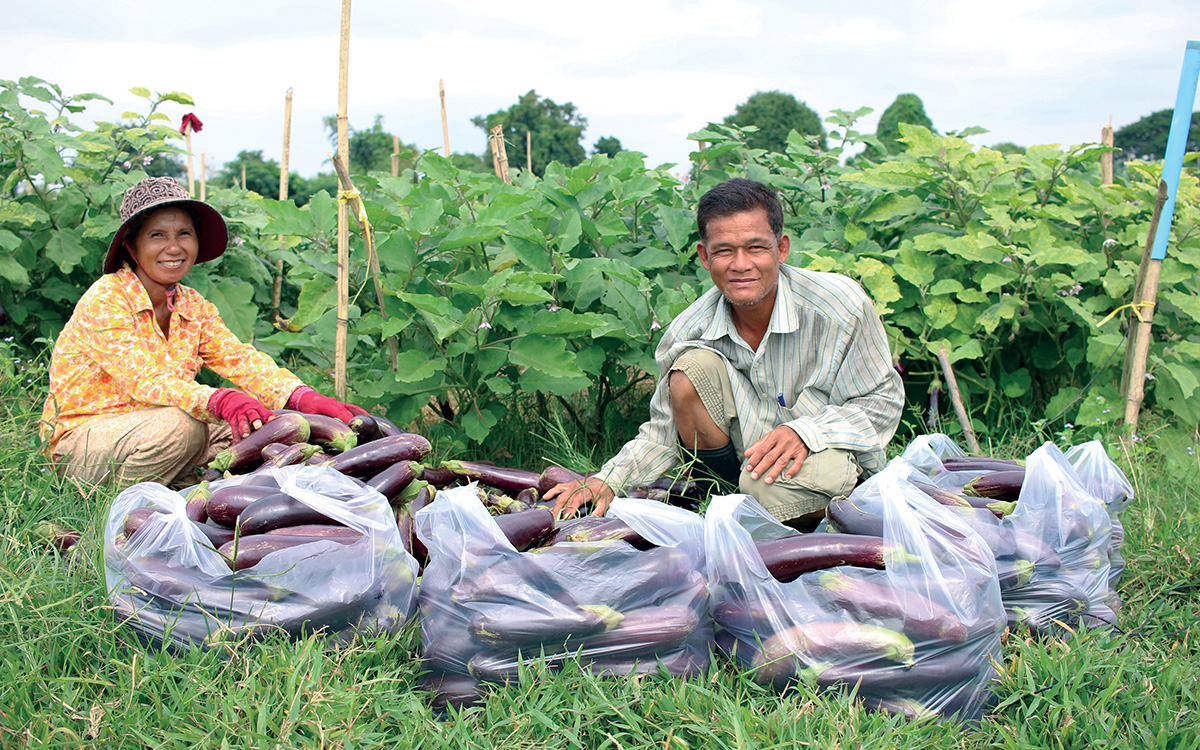
Vegetable buyer Lach Nam collects eggplants from farmer Chun Sokhom to supply to the market in Phnom Penh.
Courtesy of USAID
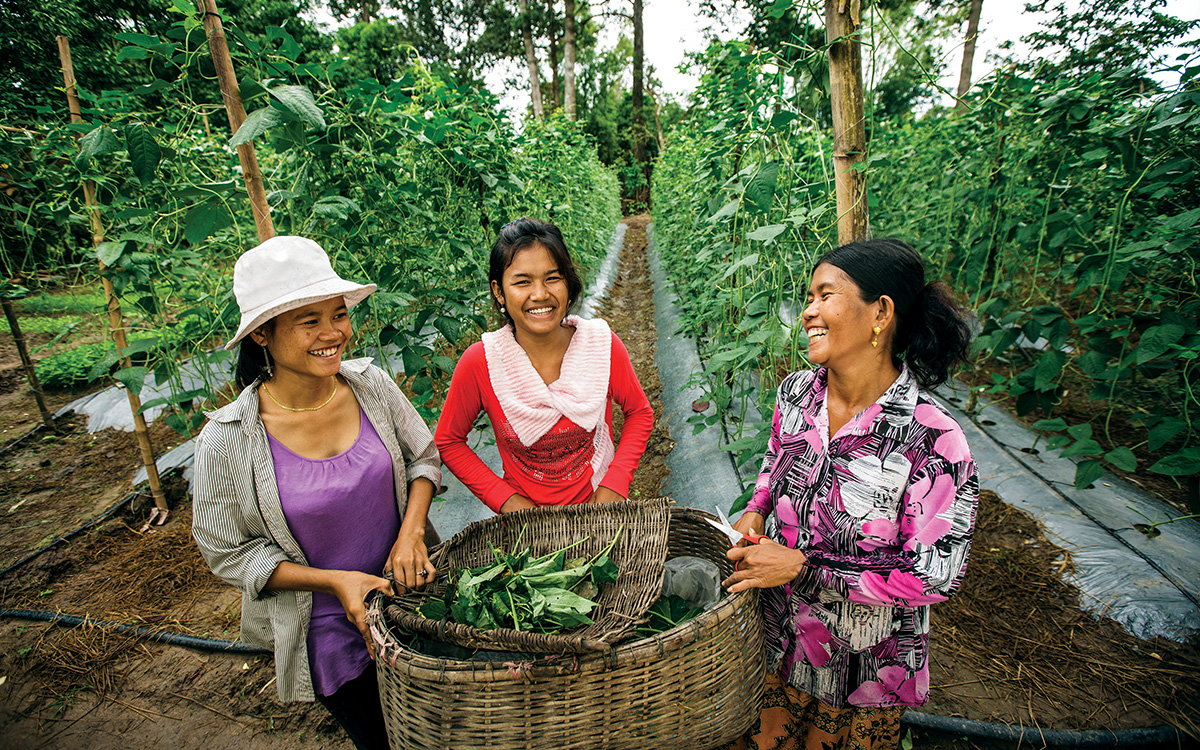
Farmers in Cambodia are working as part of the Feed the Future program, which supports small farms through difficult times caused by flood or drought.
Courtesy of USAID
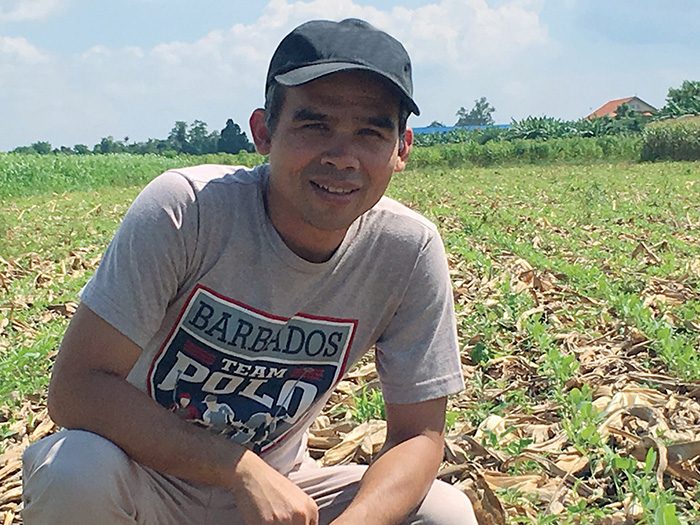
Tonh Mok.
Courtesy of USAID
In 2011 heavy rains caused major flooding in Cambodia, destroying infrastructure, creating waterlogged rice fields and leaving crater- sized bodies of water over three-quarters of the country. The United Nations estimated that 1.2 million people were affected.
When the flood hit Cambodia, I was living in Siem Reap, one of Cambodia’s poorest provinces and home to our greatest historical monument, Angkor Wat. Residents suffered severely from the flood’s impact, and I learned firsthand how critical it is for communities to quickly recover from food insecurity and poverty. I knew then that I wanted to be part of a development project that would directly improve living conditions.
In early 2011, USAID started a new food security initiative called Feed the Future in Cambodia, and in September 2012 I was hired to work with the Food Security and Environment team to co-manage a number of its activities.
Feed the Future’s goal was to reduce hunger and poverty, while looking at ways to maintain sustainable uses of natural resources. The project team worked closely with smallholder farmers, poor households, women, youth and communities to help them better cope with difficulties such as flood and drought, by introducing new and improved production practices, postharvest value addition, business skills and marketing.
As a monitoring and evaluation specialist, I meet people in the field, learning from them about how activities are going, and I get to see the change in people’s lives. We reached almost 300,000 smallholder farmers in four provinces around the great Tonlé Sap Lake, providing knowledge, skills and better access to finance, markets and jobs.
The data I collected demonstrated that nearly 200,000 farmers had improved their agricultural practices and saw their yields increase by as much as 200 percent. With this assistance, farmers saw increased sales, adding up to $40 million to the economy in those provinces. Our assistance contributed to a significant reduction in poverty and improved children’s health in the four provinces. The number of people living below the national poverty line decreased from 40 percent in 2009 to 17.5 percent in 2015. Child stunting rates—a measure of malnutrition—also significantly dropped, from 44 percent in 2010 to 33.7 percent in 2014.
This is an incredible story that my numbers have helped to write. I had a firsthand view of the flooding and then of the recovery. Feed the Future changed the lives of many Cambodians for the better.
Nurturing Nutrition Leadership in Uganda
BY SHEILA NYAKWEZI
In Uganda, malnutrition is robbing the future from one in every three children, with devastating consequences at every level of society and on the country’s economic development. I have observed the impact of undernutrition in households and health facilities in Uganda. As development partners and the government of Uganda respond to this complex problem, I have been privileged to provide my expertise. Addressing malnutrition requires multiple interventions, among which the need to bridge and strengthen the human resource gap that is critical in planning, leading and managing nutrition programs is the most important.
About 10 years ago, as a young nutrition professional straight out of university, my first exposure to leadership and program management was through a one-year internship at a local industrial and research institution. At the time (and even more so today), formal employment requires work experience and qualifications that are often not taught at the university. As a young professional at this institution, I was mentored and my professional capacity was built.
The impact this opportunity had in shaping my professional career has enabled me to play a role shaping the Ugandan nutritional agenda. I understand how other graduates given similar opportunities stand to benefit and contribute to Uganda’s response to malnutrition. Each year more than 80 students graduate from Ugandan universities with degrees related to nutrition. But to create a contingent of future leaders in nutrition, there is a need to strengthen professional capacity.
With the memory of what this internship gave me, I was so pleased to be asked to work with a similar USAID project. For two years I managed the USAID-supported Food and Nutrition Technical Assistance project. I served on the project’s advisory committee and provided guidance that shaped the program, which provided a combination of training, experience and professional development to recent university graduates. Through a competitive process, successful nutrition professionals were attached to various organizations, health facilities and government ministries.
For 12 months, the host organizations mentored and built these young professionals’ skills. The hands-on experience would empower them and help them develop the skills necessary to implement quality programs in the future. Through these close supervision and mentorship provided by host organizations, the graduates gained job experience and built leadership, communication, technical and managerial skills. In addition, the graduates provided support to the ongoing work at host organizations. The program was beneficial to all participants, in both the short and long term. Most importantly, this is a program that can be scaled up and expanded. I am giving back what I was fortunate to have been given.
The impact of this activity in addressing the human resource gap for nutrition cannot be ignored. During the course of this program and in the engagement with stakeholders and implementing partners that hosted the young professionals, it was clear how the graduates used their skills in spreading good nutrition to more people.
Where are these young people today, and how did the 12-month experience contribute to their personnel and professional goals? To date, of the 19 that have completed the two program cycles, all but three are employed and some have gone back to pursue further studies. At the institutions (e.g., universities, health facilities and organizations) where they are employed, the engagement for some will hopefully mirror mine and help continuously change the nutrition landscape in Uganda for the better.
Improving the Quality of Education in Kosovo
BY ANTIGONA MUSTAFA
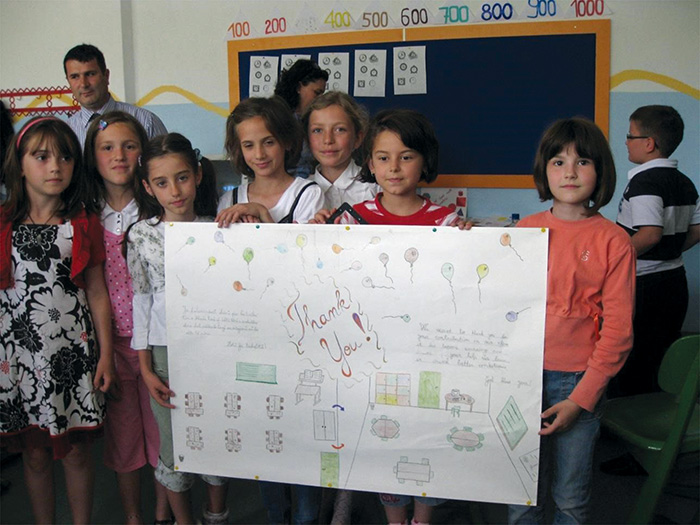
Participants in a “Girls and Technology” after-school club in Kosovo, where girls can learn coding, design and science experiments, pose for a photo.
Antigona Mustafa
One of the greatest joys in life is seeing happy faces on children, and that is what I have experienced implementing the USAID Basic Education Program in Kosovo.
Like all parents, I want what is best for my children. I know they are smart, strong and will make good decisions. I do not know what opportunities they will have, especially the opportunities my daughter will have compared to my son. USAID’s BEP is giving all kids, and especially girls, the skills they need to make the most of any opportunity and to create their own.
The BEP initiative targeted all public primary schools—grades one through nine—and took an institutional approach. Its overarching goal was to improve the government of Kosovo’s ability to manage the education sector, ensuring there would be continual improvements in the quality of primary education even after project activities ended. BEP operated from October 2010 until July 2016, jointly funded by USAID and the government of Kosovo. The government provided 50 percent of the funding and became adept at budgeting and managing resources for education. I was involved in negotiating these terms with the government, and then carried out continual oversight of the project’s implementation. We sat together as true partners to discuss and plan this project for the biggest impact for all children.
The project also focused on marketable skills, with a specific focus on getting girls involved in science and technology. I was especially pleased to be able to design these activities. Operating under the motto “Developing students’ 21st-century skills with schools and communities,” BEP sought to improve the capacity of Kosovo’s schools to provide students with relevant skills. After-school programs included activities such as Green Clubs, Technician Clubs, Design Challenges, Robotics, Junior Oscar, and Girls and Technology.
The Girls and Technology activity, in particular, was very popular. Girls from grades seven to nine participated in a variety of challenges that had them programming, running small science experiments, working with electronics and doing design work. Their work was facilitated by teachers or older students in relevant fields, who served as role models.
In addition, successful women in technological fields were invited to these events and inspired the girls to consider occupations that are still mostly dominated by men. On one occasion, the first female president of the Republic of Kosovo, Atifete Jahjaga, visited and shared her observations: “During my visit to the working groups, I saw extraordinary potential in girls and their advanced level of technology use. I see in them scientists in the field of technology and future leaders of our government.” It was an honor to have her visit and to have her support.
I cannot know the exact path my children will take, but I am hopeful for them. If a woman can be president, then what else? I am grateful for the United States’ contribution to the improvement of Kosovo’s education system for all children, and I am proud to be part of this improvement.
Strengthening Vulnerable Pastoralist Communities in Northern Kenya
BY DORINE GENGA
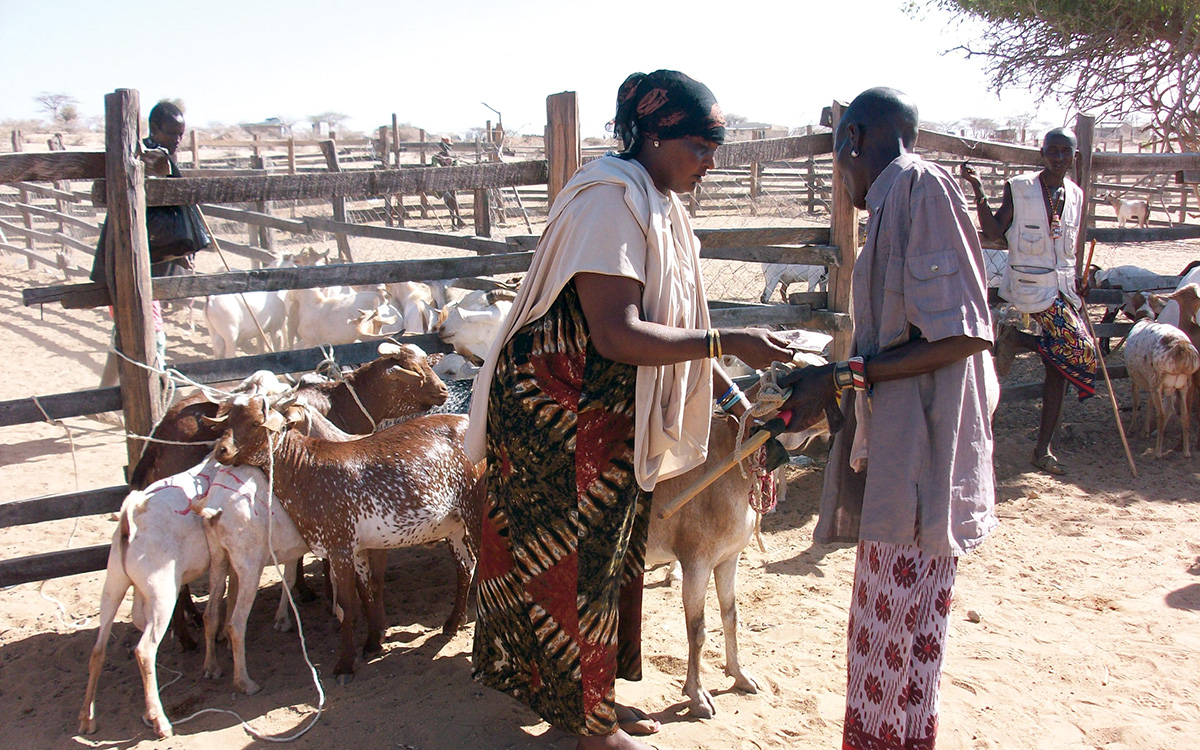
Following the 2011 drought in Kenya, many families lost their entire herds, leaving them without any source of income. The vendors at the Merille livestock market faced many challenges, including being forced to travel long distances in search of pasture, water and veterinary care.
Courtesy of USAID

Dorine Genga.
What does drought look like to you? For the pastoralist communities in northern Kenya that rely on livestock herds to sustain their families, a drought can mean the death of their cattle, which may be their sole source of income. In northern Kenya, traditional culture places enormous value on amassing large herds of cattle, camels and goats as a sign of wealth and status in the community. These herds represent the entirety of these people’s assets, for they are generally averse to saving in formal banking systems.
In the north, the small percentage of the community that engages in farming is also threatened by droughts as crops wither and die. Severe droughts cause major challenges for farmers and pastoralists alike, not only in terms of their income, but also their ability to survive.
Drought-induced poverty often results in other challenges, such as malnutrition for children and expectant mothers, conflict, insecurity and increased vulnerability of women and children, because the men leave their homes and trek for longer distances in search of pasture and water for the already emaciated livestock. Sadly, I have seen this firsthand.
In 2011, an 18-month drought affected the Horn of Africa, leaving more than three million Kenyans in urgent need of food aid. In the wake of this devastation, USAID started the Resilience and Economic Growth in the Arid Lands project to spur livelihoods in a zone that was traditionally dependent on humanitarian assistance. Working with communities, the goal was to strengthen families so that they could weather the next shock—whether it be drought, a storm or cattle disease—without completely losing their livelihood.
I participated in a REGAL field visit in 2013, where I listened to pastoralist traders at the Merille livestock market describe the challenges they faced. One of the stories that touched me was that of one man who was robbed on his way home after selling his camels for $3,000. He was devastated. He asked for USAID’s assistance to get mobile banking to the area so that these transactions didn’t force them to carry large amounts of paper currency. A female trader also raised concerns about the long distance she had to travel to get veterinary services when her goats and sheep showed signs of infection. In one of the villages we visited, a lady stated she had only been eating one meal a day and would sometimes go two days without a meal. Her children looked really thin and miserable.
Following this field trip, I returned to the office with a deepened desire to make a difference in the communities we work with, especially for women and children. At the time, a partnership to link various U.S.-funded activities in northern Kenya had just been formed called the Partnership for Resilience and Economic Growth, or PREG. I took the lead to motivate and challenge our development partners and staff to improve the way we do business in northern Kenya so that we have a greater, more meaningful impact on the communities we serve.
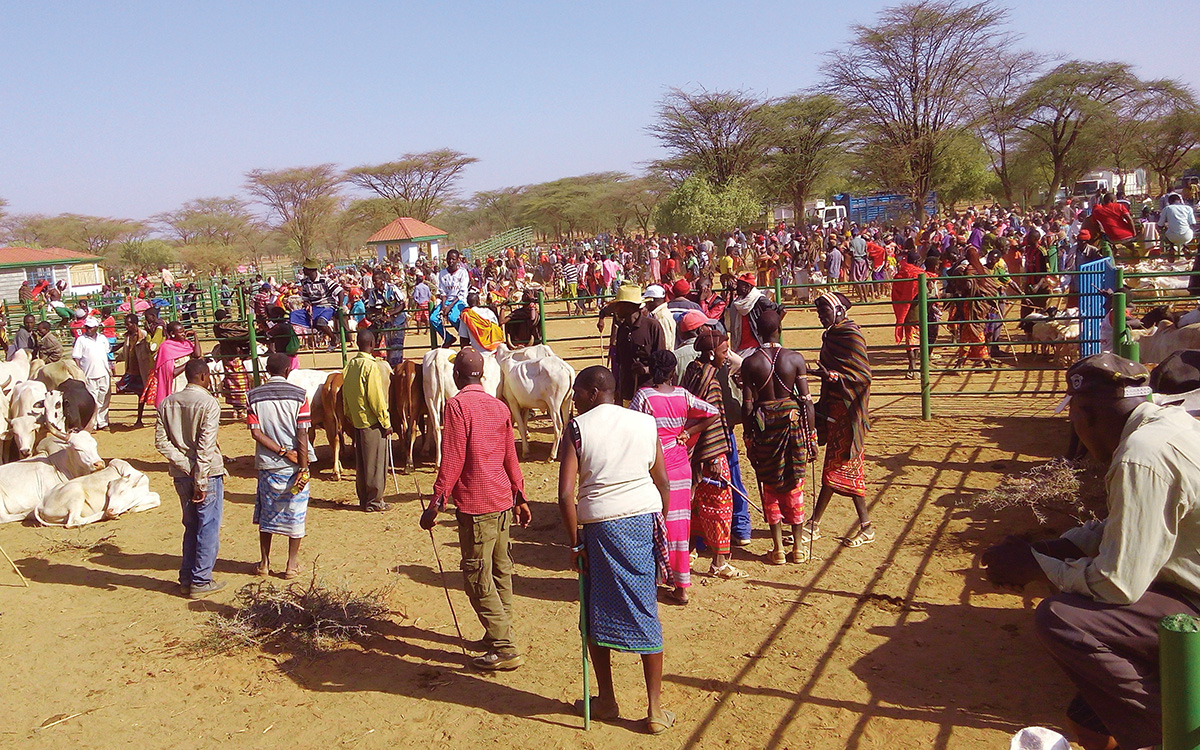
As part of the Partnership for Resilience and Economic Growth, USAID works to improve business models in northern Kenya. Since 2015, the Merille livestock market has added mobile banking and veterinary services, and opened up trade to include vegetables and other products from the surrounding areas.
Courtesy of USAID
I am often referred to as “Mama PREG” for my nurturing yet tough-love approach to keeping the partnership focused on continual progress. Small changes I make in the way I think and work have the potential to make a big impact. As W. Clement Stone said, “Big doors swing on small hinges.” This is the mindset I promote and champion in my work, and within the partnership, I challenge all members to leave a legacy in the work we do every day.
The Merille livestock market is an example of PREG’s success. There I was able to directly address the challenges I had heard about on that previous REGAL site visit. In 2015, the Merille livestock market was being rehabilitated. As part of my work, I facilitate joint planning sessions among partners to identify the opportunities for collaboration, and include the needs of the community and the impact on the environment into the design.
With the new design, the community members have access to mobile banking to address security concerns, and commercial banks have even opened offices in the market. The county government started providing veterinary services in the market, making animal disease detection and treatment more accessible so that traders, such as the woman I met, don’t need to travel as far to treat their herds.
Moreover, the market has opened up trade beyond the sale of livestock, with vendors selling hot food, vegetables and other products from surrounding counties. Now, going to the market in this remote area affords community members an opportunity not only to sell their livestock, but also to buy their family’s provisions and seek health care services at the nearby Merille clinic. Partnership has played a major role in making the market functional, bringing transformation to the pastoralist community in Merille and northern Kenya as a whole.
A USAID survey in mid-2015 offered evidence of PREG’s impact. After 2 1/2 years, there was a documented 12 percent reduction in the depth of poverty and a 28 percent increase in women’s dietary diversity in northern Kenya. For me, this information validated USAID’s new way of doing business, demonstrating that collective actions lead to collective impact. At a personal level, the data provided the impetus for me to work to overcome challenges of a maturing partnership and facilitate an environment that promotes continuous learning and improvement.
One of my proudest moments was when I co-designed and facilitated a transformational leadership training workshop for PREG’s county-level leads. One participant stated that his takeaway nugget from the workshop was this: “The essence of a partnership is working together to improve outcomes that improve a community’s well-being.” This workshop demonstrated how we have cultivated transformational leadership among our stakeholders as champions for change—a key component to Kenyans’ ability to transform the arid lands and maximize the sustainable impact of U.S. government investments in Kenya.




